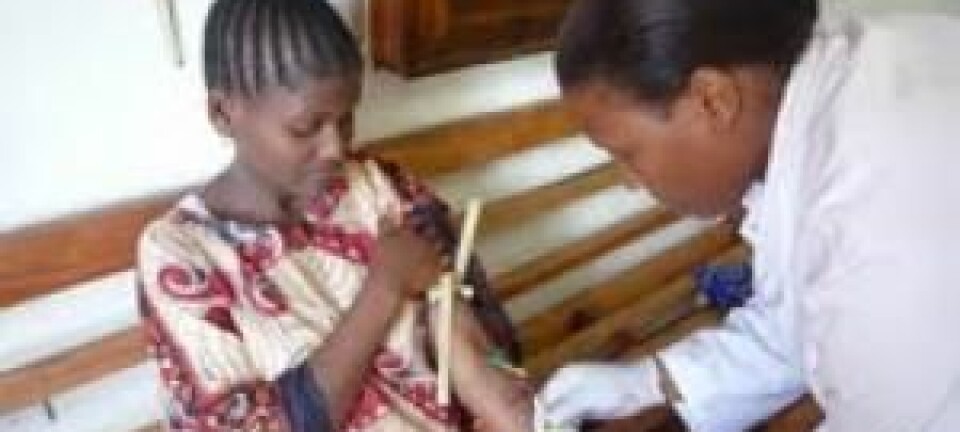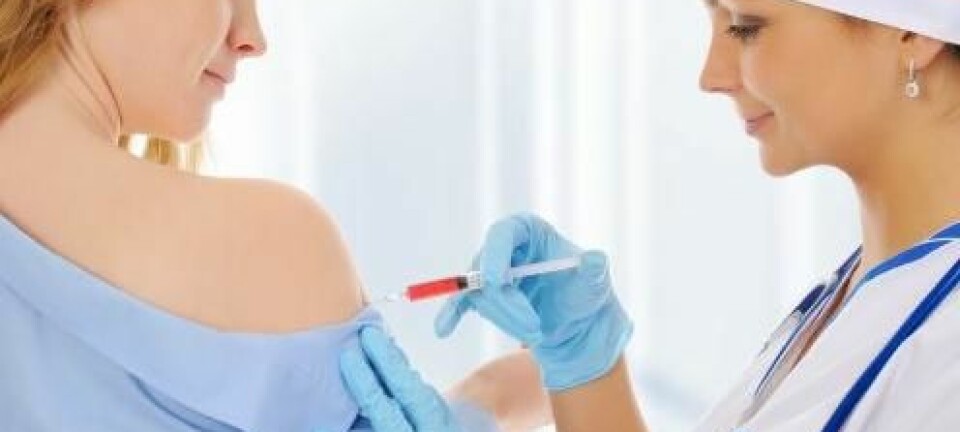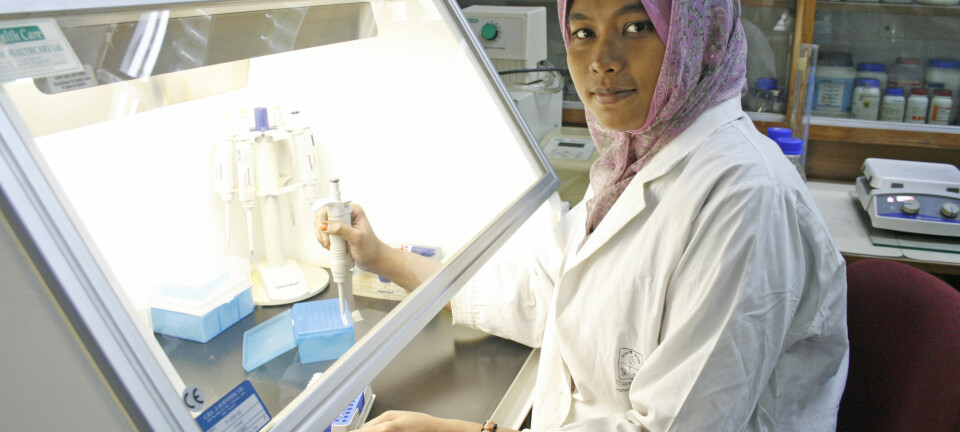
No serious side effects from HPV vaccine
A study of nearly a million girls in Sweden and Denmark eradicates anxieties about mass vaccinations against the virus that causes cervical cancer.
The human papillomavirus (HPV) is the name given to a group of common, sexually transmitted viruses that can cause cervical cancer.
Researchers have examined Swedish and Danish health registers that include roughly 300,000 girls vaccinated with HPV and compared them with almost 700,000 unvaccinated girls born from 1988 to 2000 in Sweden and Denmark.
“We see nothing indicating that the HPV vaccine involves any risk of serious side effects,” says Associate Professor Lisen Arnheim-Dahlström of Karolinska Institute’s (KI’s) Department of Medical Epidemiology and Biostatistics.
“The follow-ups of the young girls, all aged 10 to 18, were recorded in hospital and specialist health care unit registers for 180 days after the vaccination,” explains Arnheim-Dahlström, adding that the HPV vaccine is administered in three different doses over six months.
Arnheim-Dahlström says that the researchers do not have information on side effects or disorders that would have been registered with general practitioners or emergency wards.
“We don’t have an overview of these registers and can’t say anything about prospective passing fevers, headaches, dizziness or reddening of the skin around the injection spot. We decided to give priority to serious, pronounced and defined diagnoses. But we haven’t found any increased prevalence of these kinds of problems among those who were vaccinated when compared to those who weren’t,” she says.
Nearly 100 percent effective
As of 2012, girls aged 11 and 12 in Sweden have been offered HPV vaccinations as part of the country’s general vaccination programme. The vaccine was included in the Norwegian child vaccination programme from the autumn of 2009 for girls in seventh grade.
Do we know how effective the HPV vaccine is?
“Clinical studies involving nearly ten years of follow-up show that the vaccine works. We see that girls who are vaccinated do not exhibit the kinds of cell changes that preceed cervical cancer. These are the results for nearly 100 percent of cases for the HPV types the vaccine is for. The vaccine has the most effect when it is given to girls who have not had any sexual encounters,” the researcher said.
She says the vaccine is 93 percent effective for girls who are vaccinated at age 10 to 13, whereas the effect is about 70 percent for young women aged 14-17.
“Cell changes are a precursor to cervical cancer, but some types of HPV virus also lead to genital warts. In Australia, where the HPV vaccine was introduced first, cases of genital warts in several age groups have plummeted among those who were given the vaccine. The number of women who had cell changes has also dropped. So it’s assumed that many cases of cervical cancer have been averted,” says Arnheim-Dahlström.
Controversial vaccine
The HPV vaccine has triggered debate in Norway and elsewhere. In addition to scepticism about mass vaccination of pre-pubescent girls, some people have argued that cervical cancer cannot be regarded as a fatal epidemic. In Norway, with its population of 5 million, 300 women contract this serious disease annually.
“In Sweden the figure is 450, and roughly 150 die each year – a number which I think is too high. If you look at the number of new cell change diagnoses cropping up in Sweden, about 10,000 women are affected each year. We discover so many because in Sweden, like in Norway, women aged 20 to 60 are called in for a check-up every third year,” Arnheim-Dahlström says.
Is it correct that the HPV vaccine only works for six to ten years, and that these women will probably have to be revaccinated later in life too?
“We actually don’t know yet, but this is probably true. I don’t think revaccination is anything to get upset about. We also revaccinate for measles and TBE (tick-borne encephalitis), for examle. In addition, the national health service can save a lot of money in the future because young women who have been vaccinated don’t have to be included in mass examinations for cervical cancer,” Arnheim-Dahlström adds.
She doubts there is much real opposition to HPV vaccination.
“My impression is that there are a few groups who use the Internet to reach out with their propaganda against vaccines in general. In the Western world we’ve vaccinated away most of our childhood illnesses and that’s why opponents don’t know how dangerous diseases like measles are. We have a tendency to focus on possible side effects and forget the risks of the disease and the advantages of the vaccines,” says Arnheim-Dahlström.
An act of solidarity
She thinks that some people find vaccinations provocative, compared to medications, because vaccines don’t heal. They are preventive.
“We are adding something to the bloodstream of healthy individuals. But we tend to forget that a vaccination is an act of solidarity. By shielding yourself you can actually be indirectly protecting others by stopping the potential spread of disease,” Arnheim-Dahlström says.
She adds that criticism by anti-vaccination groups, especially with regard to HPV vaccine risks, is often misleading.
“Much of it is taken out of context and turns into misinformation. There have even been reports of deaths from the HPV vaccine in the USA. But if you check the actual figures, you find that these individuals actually died of other causes,” she explains.
Does that mean there is no need to worry about possible long-term effects or problems linked to the HPV vaccine?
“We will continue to conduct this type of study as the years go by and will monitor developments with women who have taken the HPV vaccine. But as the time since the vaccination increases, it will be more and more difficult to say whether any negative developments can be linked to the vaccine rather than to some other risk factor,” she said. “The vaccine could lead to side effects, as can be said with other medications, but we shouldn’t forget to weigh the benefits against the risks.”
----------------------------
Read the Norwegian version of this article at forskning.no
Translated by: Glenn Ostling









